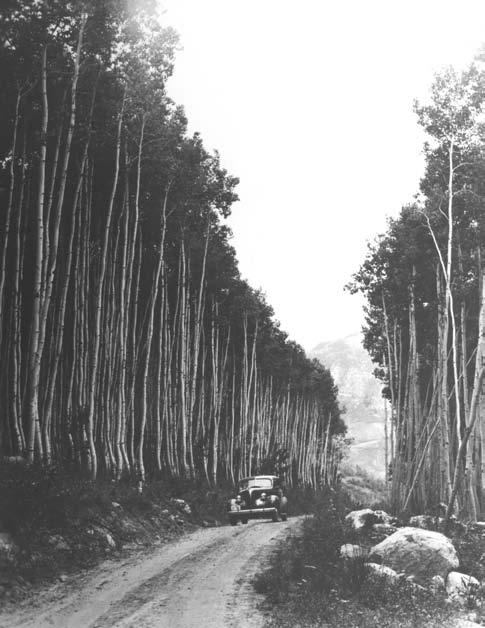
4 minute read
In This Issue
In November 1911 voters in the small town of Kanab did the unheard of by electing an all woman town council and mayor. The election coming a decade and a half after the state constitution granted women in Utah the right to vote, was considered by many an important manifestation of the growing success of the suffrage movement in the United States that would carry forward to the passage of a constitutional amendment granting all women the right to vote. The selection of an all woman town council, one of the most unusual local elections in American history, introduced a radical, but plausible, democratic principle going beyond the right to vote for women and extending to them the right to govern. Were the five women elected on November 7,1911,to the Kanab town council heroines of the American suffrage movement and did their election spur the movement onward to even greater success? Or were there other motives and forces responsible for their election? Our first article in this last issue for 2005 holds some stimulating surprises.
Moving from the far southern part of the state to northern Utah, our second article offers a brief history of the Cache National Forest. By 1902, contaminated drinking water, overgrazing and its accompanying erosion and flooding, excessive timber harvesting, as well as other environmental concerns led Cache Valley residents to conclude that the nearby mountains could only be protected through federal government designation of the valuable land as part of the National Forest Reserve system.The process moved quickly and on May 29,1903, Republican President Theodore Roosevelt, in a major speech delivered in the Salt Lake Tabernacle, announced that later in the day he would sign a proclamation to establish the Logan Forest Reserve—which later became the Cache National Forest. Our second article summarizes the important events that led to the establishment of the Cache National Forest and provides an overview of the Forest’s one hundred year history.

The Provo Woolen Mill was one of the most significant industrial endeavors in pioneer Utah.
UTAH STATE HISTORICAL SOCIETY.
Perhaps the most intriguing reason for our fascination with history is grounded in our quest to understand why people do the things that they do. The reasons can be simple or complex and multidimensional and can be found in a dictionary of words ranging from love, compassion, selflessness, and duty to a quest for power and wealth often made malignant by greed, envy, and hate. Our third article looks at a well-known individual in Utah history—Thomas L. Kane, and his role as a peacemaker during the confrontation between Utahns and the federal government known as the Utah War. As we see, the nineteenth century “cult of honor” that helped secure peace in Utah did have a violent and combative side as well.
Critical to the success of Mormon colonization in the American West was the establishment of a viable economic system that was compatible with the arid western climate, available natural resources, the remoteness of the land, and the religious and social values of those who moved into the mountains and valleys of Utah. Leonard J. Arrington’s seminal study Great Basin Kingdom: An Economic History of the Latter-day Saints 1830 - 1900 has provided several generations of Utah history students with a valuable introduction and overview of the Mormon economic system in the context of the religious, political, and social issues that shaped nineteenth-century Utah. Our last article for 2005 examines the nineteenth-century Mormon economic experience by comparing it to economies of emerging twentieth century nations.
All of the articles in this issue continue to illustrate the rich tapestry of events, developments, ideas, and individuals that are Utah history.






